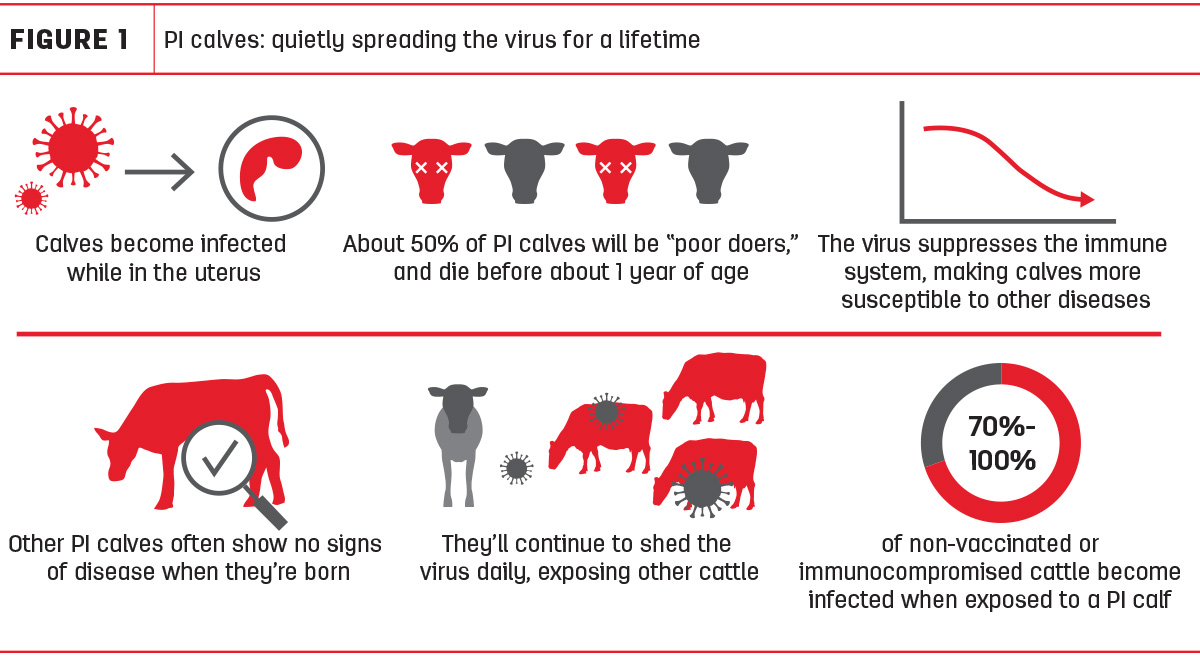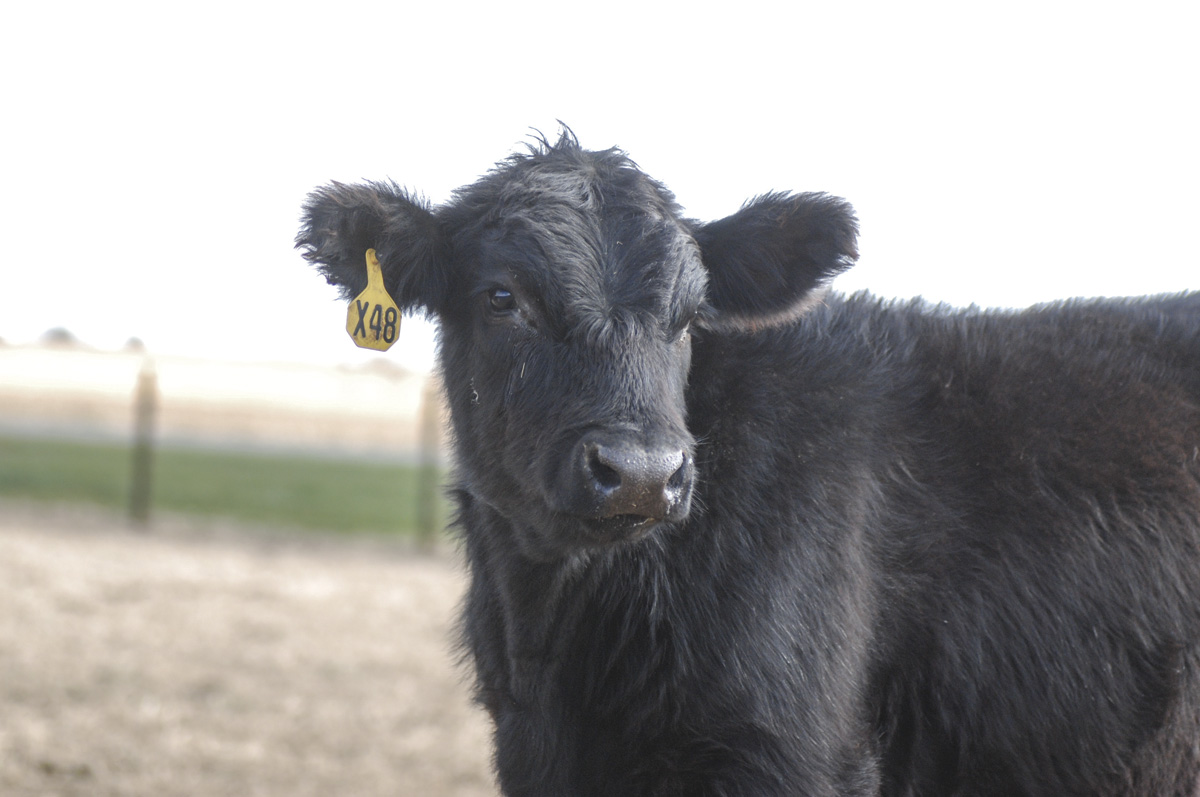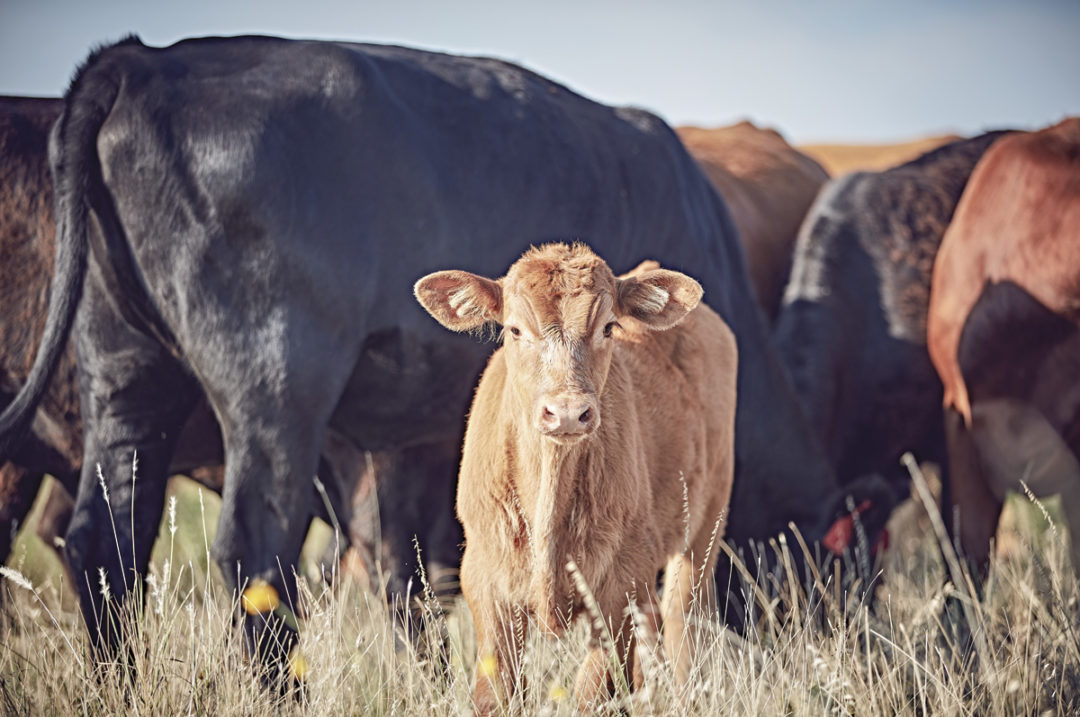Persistently infected (PI) calves continue to be a substantial threat to all segments of the cattle industry, but many producers don’t even know they are in the herd.
A PI calf is an animal that acquired bovine viral diarrhea virus (BVDV) from its mother during pregnancy. The PI calf appears clinically normal and can often go its whole life without showing visible signs, while still shedding BVDV and exposing the rest of the herd to the virus.
An infected herd will frequently experience unexplained health problems, such as calves born with abnormalities, abortions and lowered pregnancy rates. There will also be more bovine respiratory disease (BRD) cases and substandard weaning weights compared to uninfected herds.
The good news is: It’s never been easier to get serious about controlling BVDV PI calves. We know more about the virus, detection and prevention than ever before. Following the steps below can help protect your herd.
Step 1: Keep detailed herd records
You can’t manage what you don’t measure. Records are an important part of any health program but especially for identifying issues such as persistently infected calves and BVDV problems. Excellent records help you spot changes in reproductive performance, productivity and morbidity rates, which can then help you piece together a BVDV diagnosis sooner.
Step 2: Confirm your records with diagnostics
If you suspect BVDV is impacting your herd’s productivity, the next step is to perform diagnostics. In large operations, veterinarians might initiate surveillance with pooled samples to net down the average cost per head. This will help determine if BVDV is part of the issue. Any pools with positive results are followed up with individual tests to identify PI calves. All bulls, replacement heifers and dams of PI calves should be tested as well, and positives should be culled or isolated from the rest of the herd.
Step 3: Ensure heifers are eligible for breeding
Another step that’s often missing from the herd calendar is evaluating heifers’ reproductive status before turnout. We have done a really good job conducting breeding soundness exams on our bulls. Now we need to implement a similar and equally important evaluation of replacement heifers to ensure they are sexually mature and eligible for breeding. This pre-breeding herd event is a convenient opportunity to begin preventing BVDV PI calves with the inclusion of the right vaccine (see Step 5).

Step 4: Protect your herd with biosecurity
For cow-calf producers, it’s important to separate cows and heifers from animals with an unknown PI status. Some of the costliest BVDV PI incidents I’ve seen have been when well-intentioned producers exposed unprotected and vulnerable pregnant cows and heifers to cattle of unknown BVDV PI status. This exposure can occur via commingling or via fenceline contact. The good news is: We can often prevent the formation of PI calves with sound biosecurity and prevention practices.
For producers who buy cattle from unknown sources, there’s always the risk of PI calves being present. Those infected animals can shed the virus around the feedbunk, the water trough and the chute during processing. That’s why it’s important to quarantine new additions to the herd.
It’s a good idea to keep them in their own group for 14 to 21 days, test their BVDV status, monitor them for disease and make sure they’re vaccinated before moving those cattle out into the general population.
Step 5: Choose a vaccine proven to prevent PI calves
Vaccination is the most important part of not becoming a victim of the PI calf problem. This is truly one of those diseases we can prevent through selecting the right vaccine and giving it at the right time. I recommend vaccinating cows with a modified-live BVDV vaccine pre-breeding. When looking at modified-live virus (MLV) vaccines, the key question to ask is, “Is there a PI prevention claim clearly indicated on the label?” It’s vitally important to understand that all MLV vaccines are not equal in preventing BVDV PI calves.
 Some of the costliest BVDV PI incidents have been when well-intentioned producers exposed unprotected and vulnerable pregnant cows and heifers to cattle of unknown BVDV PI status. This exposure can occur via commingling or via fenceline contact. Photo courtesy of Boehringer Ingelheim.
Some of the costliest BVDV PI incidents have been when well-intentioned producers exposed unprotected and vulnerable pregnant cows and heifers to cattle of unknown BVDV PI status. This exposure can occur via commingling or via fenceline contact. Photo courtesy of Boehringer Ingelheim.
Your vaccine selection should also reflect the latest research, which shows that Type 1b is now the most prevalent subspecies of BVDV. Whether you’re a cow-calf, stocker or feedlot operation, when your cattle are exposed to BVDV, the odds are 3-to-1 they’re going to be exposed to Type 1b. If you’re a betting person and you take those odds, you’ll want to make sure your vaccine program lines up against that threat.
That same pre-breeding MLV vaccine also helps cows produce antibody-rich colostrum that can protect newborn calves from BVDV for several weeks to a few months. Even if a calf is born with sufficient colostrum intake from a well-vaccinated cow or heifer, producers can vaccinate that calf around 30 days old with an MLV vaccine that includes the BVDV antigens.
My best advice is to work together with your beef cattle veterinarian and get to know the BVDV issues around your region – and utilize resources like BVDVTracker.com. It has an interactive heat map that makes it easy to identify if BVDV is in your area.
Our end goal as beef producers is to provide a wholesome product for our consumers. Managing BVDV PI calves will help us take healthier cattle to market, reduce our antibiotic use and provide a better overall experience for the consumer.
References omitted but are available upon request. Click here to email an editor.







